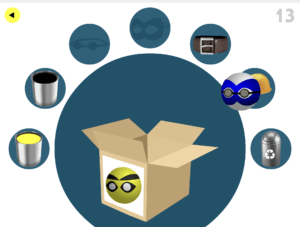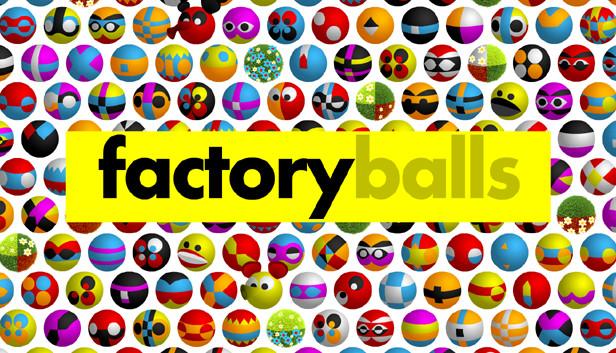Factory Balls is a puzzle game that blends creativity with strategic thinking. It was created by Bart Bonte and targets players that enjoy problem-solving and logical thinking. Factory Balls is also ideal for casual gamers that enjoy solving puzzles as a pastime activity. For my critical play, I played Factory Balls on Steam using my Mac.
The mechanics of Factory Balls create an engaging and relaxed puzzle-solving experience. One set of mechanics that contribute to this gameplay experience is the mechanics involved in replicating the target pattern. For instance, players click to apply the various tools, layers of paint, and other elements to match the specified design. Players must also employ sequencing when trying to determine the correct order of tool and paint applications. These design mechanics are intuitive and create an easy-to-understand process that requires players to think logically about the order of operations as they engage with the different tools and elements provided.

Another mechanic that contributes to the puzzle-solving experience is giving players an unlimited number of attempts per level to replicate the target pattern. This encourages experimentation through a trial and error process. There is also no timer, so players feel no sense of pressure as they explore solutions at their own pace. This helps the gameplay experience feel calm and relaxed.
This mechanic also directly satisfies the psychological need for autonomy. Players are given no instructions besides matching the target design, and they have full freedom to experiment with the tools and elements. Likewise, this mechanic also exhibits the materialistic need to construct the ball patterns and establish a sense of order in achieving the target design.
I believe this mechanic was a good design choice, since it allowed me to immerse myself in the puzzle-solving aspect of the game. My primary objective was not to complete the puzzle quickly, but instead, I aimed to develop skills that would allow me to understand the application of the layers. This way, I would be better equipped to achieve future levels. This design choice also allowed my senses of discovery and satisfaction to take precedence over an objective to win.
The last mechanic that contributes to the gameplay experience is increasing puzzle complexity. As the players progress through the levels, the difficulty of the levels increase; the target designs get more complex. This creates a puzzle-solving experience that is engaging and fresh, such that players are introduced to new designs as well as new tools. However, this mechanic also allows players to be challenged as they refine and strengthen their skills. As players adapt to new constraints and design possibilities, the gameplay experience remains stimulating and helps maintain a sense of accomplishment through the level progression.
In the same vein, the increasing difficulty is a portrayal of the self-determination theory, in which players establish a sense of competency. As players progress, they garner a sense of mastery that motivates them to continue playing. Although the game is easy to learn and pick up, there is a gradual difficulty curve that ensures players have refined their skills to the best of their abilities in order to continue progressing. In other words, the game is easy to learn but difficult to master, since only players with the best strategic and logical thinking skills will remain motivated enough to achieve the harder levels.
A related design choice I enjoyed is that the game does not explicitly tell players that the levels become increasingly difficult. This allowed me to not hyper-focus on the fact that the current level was more difficult than the previous level. This helped me enjoy the game more, as I was only focused on the level I was playing and not the levels to come. I only realized that the levels became increasingly difficult because I was stuck on later levels, and I noticed that more tools and elements were being introduced as I progressed.


Another interesting design choice related to the introduction of new tools is that players do not receive guidance on how the tools operate. For example, an element introduced was grass and flowers, but players had to use the watering tool to make the grass and flowers grow. Everytime that the watering tool was used, the plants would slowly grow until they were overwatered. Initially, I did not realize that the watering tool was to be used repeatedly to achieve the desired plant growth, but I eventually figured it out after experimenting with the plants and watering tools. This was not a bad design choice, as it helped reinforce the idea that I must experiment with the elements of the game in order to successfully match the target pattern.

Overall, Factory Balls excels in creating a compelling yet relaxed gameplay experience through mechanics that encourage strategic thinking, autonomy, and skill development.



